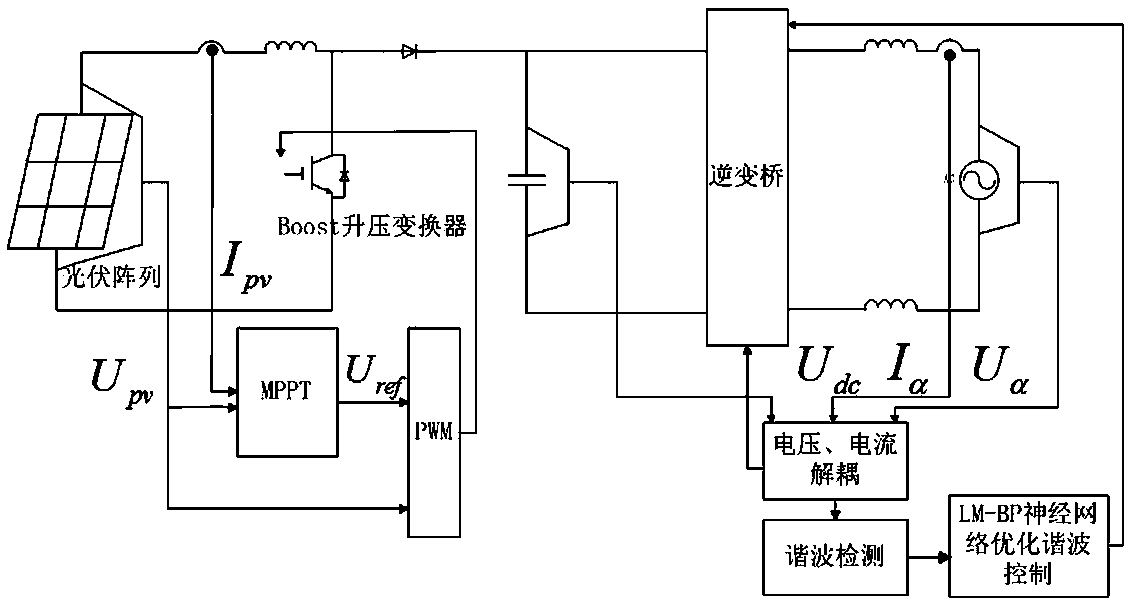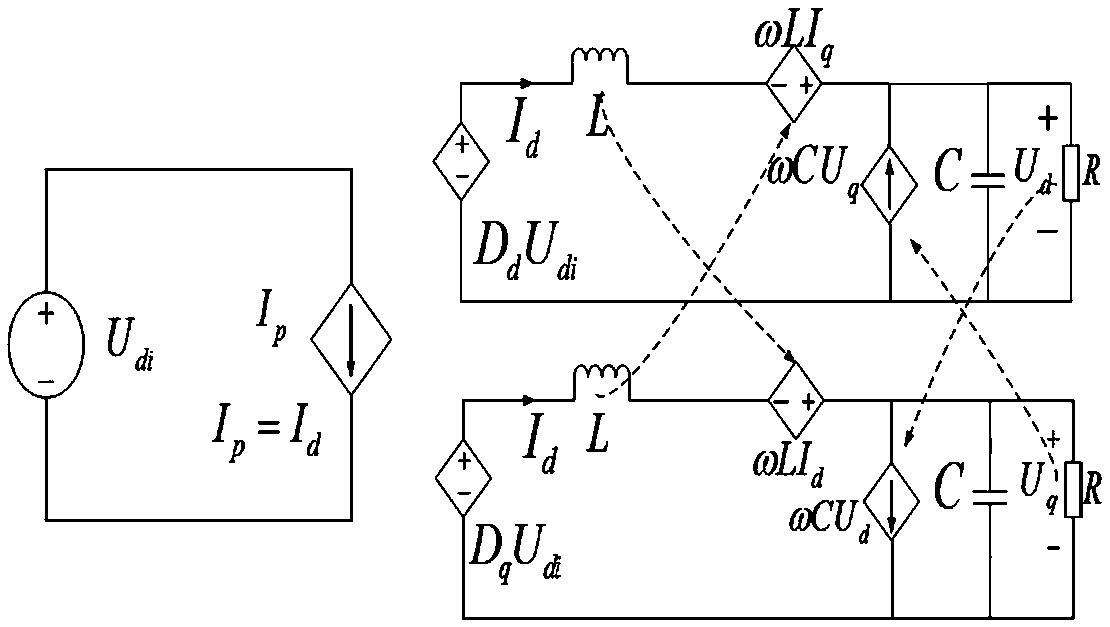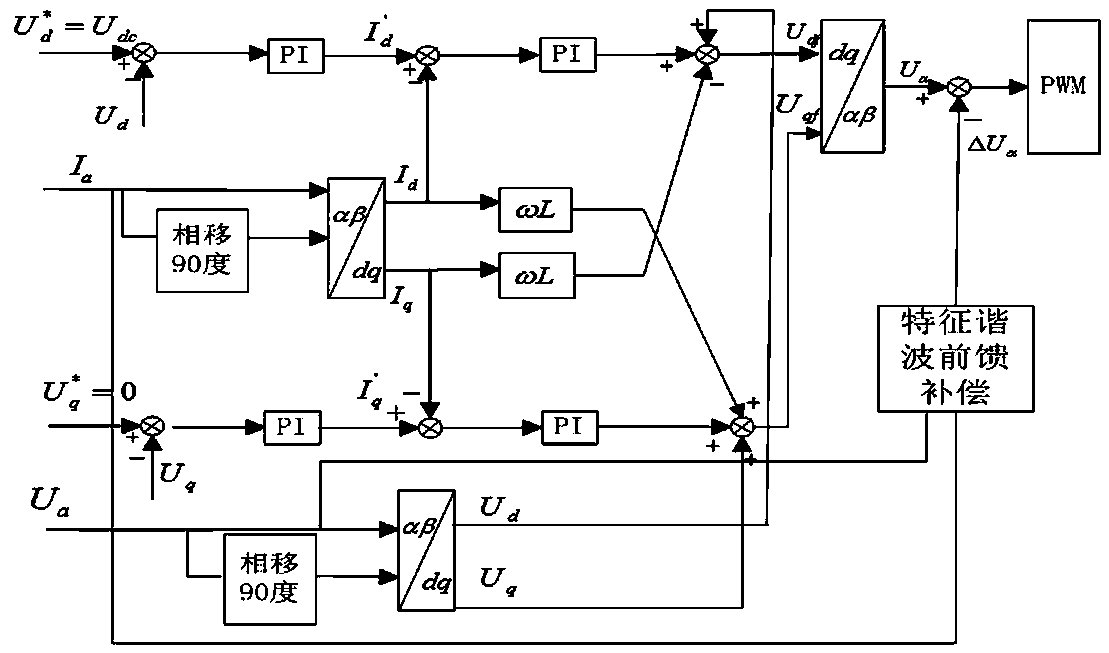An adaptive harmonic elimination current control method for a single-phase photovoltaic inverter
A technology for photovoltaic inverters and single-phase inverters, applied in photovoltaic power generation, harmonic reduction devices, and AC networks to reduce harmonics/ripples, etc., can solve the problems of low compensation accuracy, weak anti-distortion ability, compensation Single way and other issues
- Summary
- Abstract
- Description
- Claims
- Application Information
AI Technical Summary
Problems solved by technology
Method used
Image
Examples
Embodiment Construction
[0061] The present invention will be described in further detail below in conjunction with the accompanying drawings.
[0062] A single-phase photovoltaic grid-connected inverter adaptive harmonic elimination current control method includes the following steps:
[0063] Step 1: transform the output current of the inverter and the voltage on the grid side in the static αβ coordinates and the dq rotating coordinates;
[0064] Step 2: List the state equation of the system in the d-q coordinate system, perform feed-forward decoupling on the output voltage and load current of the single-phase inverter, and establish a dual-loop PI control model for the inverter controller;
[0065] Step 3: Extract the characteristic harmonic components (3, 5, 7, 9th order) in the output current of the inverter through the harmonic detection module;
[0066] Step 4: Input the extracted characteristic harmonics into the adaptive neural network control module, adjust the compensation gain, compensate...
PUM
 Login to View More
Login to View More Abstract
Description
Claims
Application Information
 Login to View More
Login to View More - Generate Ideas
- Intellectual Property
- Life Sciences
- Materials
- Tech Scout
- Unparalleled Data Quality
- Higher Quality Content
- 60% Fewer Hallucinations
Browse by: Latest US Patents, China's latest patents, Technical Efficacy Thesaurus, Application Domain, Technology Topic, Popular Technical Reports.
© 2025 PatSnap. All rights reserved.Legal|Privacy policy|Modern Slavery Act Transparency Statement|Sitemap|About US| Contact US: help@patsnap.com



